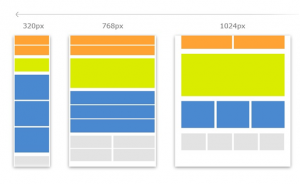— June 21, 2017

Social media marketing, broadly speaking, is made up of two distinct strategies – brand pages (organic) and advertising (paid).
While past advice in this area has focused mostly on the organic area, the truth is that most brands find it very difficult to perform well in this area. Organic social media marketing is harder than it ever has been before, and in that type of climate, most brands still get it wrong.
At the same time, the paid side of social marketing has grown up and established itself as an effective way to reach customers in many different industries. And so, it’s time for marketers to ensure that they are getting the most out of social media advertising.
Facebook is the largest social network and a well-established advertising channel. With a wide array of self-service options, brands can target Facebook users both on and off the Facebook website and app, in their newsfeeds and the right-rail. Target advertising based on demographics, interests, page likes and more, with different formats, like video, carousel, lead generation, and click to convert.
For more information, check out these tips for advertising on Facebook.
Instagram is owned by Facebook, and all advertising is controlled directly through Facebook’s ad platform. Options continue to be built out to support brands who want to target users of the photo sharing app. And all Facebook advertisers have the option of sharing their ads on Instagram as well.
If you are interested in advertising on Instagram, you should read more here.
Twitter advertising is less about direct conversions or lead generation, and more about branding and awareness. Brands are able to promote topics or tweets in order to gain exposure, followers, and clicks. These promotions can be targeted based on location and other demographics, as well as interests and follower data.
LinkedIn’s audience is there for reasons that are more specific than some of the broader networks like Facebook and Twitter, and due to that its advertising potential is limited to certain types of companies and reasons. Many B2B businesses have been able to use LinkedIn for lead generation campaigns as the targeting options are robust for company type, size, industry and job roles. You can target people with ads in someone’s feed, banners on an individual page, and sponsored In-mail.
Just like LinkedIn, Pinterest’s users are using the service for a specific reason. Most commonly, these are shoppers looking for products and ideas, in spaces like home design, fashion, and event planning. Its heavily-female audience is an interesting place for brands looking to reach more of this creative-minded consumer. Brands can pay to promote pins and target them to users based on interests and activity on the site. Learn more about Pinterest ads here.
YouTube
Some people consider Youtube a social network, others put it into another category. But for brands looking to reach a larger audience online, Youtube has become a go-to spot for advertising. Brands can create and promote their own channels, create video ads that run before other content, and show banners alongside videos to people watching on the website. Because these ads are delivered by Google, the platform and targeting options are quite robust. While generally more expensive than Google search ads, Youtube is a great place to engage people with more dynamic content.
Snapchat
Snapchat has made a number of moves recently in an effort to court more advertisers. Their options are still changing and most of them are not self-service, unlike most of the others mentioned above. Currently, brands can sponsor stories, geofilters, and lenses, as well as create full screen ads that appear in between the regular snaps users view from friends. It’s early days for Snapchat advertising and most smaller companies should wait to see whether or not this channel is an effective one before trying it out.
Digital & Social Articles on Business 2 Community
(50)
Report Post









